Mira a Scarlett y Dianne en acción en Instagram @ScarlettSaysMore y @NeuroDogTraining
P. Entonces, Dianne, ¿quién es este estudiante tuyo?

Scarlett es Miss Personalidad, pero no creo que sea su intención. Creo que simplemente se muestra muy auténtica. Está muy concentrada en lo que cree que debería suceder, muy segura de sí misma en lo que percibe y desea, y quiere que los humanos lo sepan constantemente. He creado un entorno donde tiene libertad para hacerlo, sin supresión de comportamiento, y por eso se percibe como una persona intensa o con una personalidad imponente. Creo que Scarlett es simplemente muy genuina y empoderada.
Además, está muy centrada en las personas y le encanta acurrucarse y que la acaricien constantemente. No le da vergüenza saltar en la misma silla y hacer mucho contacto visual para transmitir su mensaje. Es atlética y le encanta tener actividades como nadar, cavar y jugar en el jardín. Siempre está dispuesta a dar un paseo en coche y con frecuencia pide ir en el coche con botones. Disfruta de la playa y del paddle surf en vacaciones. Es una chica muy divertida y divertida con un gran interés en conectar con la gente.
P. ¿Cuál fue el primer botón que escuchó su alumno?

La primera vez que Scarlett presionó un botón fue "¿Dónde está?" y pedía ayuda para encontrar su pelota, que había rodado debajo del sofá. En aquel entonces, tenía acceso a varios botones, pero esa fue su primera vez que presionó una pelota por su cuenta.
P. ¿Cuánto tiempo les tomó presionar su primer botón?
 ¡Varias semanas! Hubo bastante modelado antes de que ella diera el primer paso.
¡Varias semanas! Hubo bastante modelado antes de que ella diera el primer paso.
P. ¿Qué le inspiró a dedicarse a la enseñanza con botones?
 Cuando conseguimos a Scarlett, vi a otros como Alexis y Bunny en línea haciéndolo. Pensé: "¿Por qué no?". ¿Qué perdemos intentándolo? ¡Vamos a intentarlo! Tenía un perro joven y enérgico que necesitaba más enriquecimiento y estaba muy interesado en que los humanos lo comprendieran.
Cuando conseguimos a Scarlett, vi a otros como Alexis y Bunny en línea haciéndolo. Pensé: "¿Por qué no?". ¿Qué perdemos intentándolo? ¡Vamos a intentarlo! Tenía un perro joven y enérgico que necesitaba más enriquecimiento y estaba muy interesado en que los humanos lo comprendieran.
P. ¿A qué desafíos se ha enfrentado con la enseñanza mediante botones?
 Scarlett puede ser, sin lugar a dudas, INTENSA. Precisamente por eso, los botones son una excelente vía de escape para ella. Incluso durante nuestro entrenamiento canino habitual, puede obsesionarse mucho con los objetos nuevos, así que introduzco el control de estímulos antes que con otros perros.
Scarlett puede ser, sin lugar a dudas, INTENSA. Precisamente por eso, los botones son una excelente vía de escape para ella. Incluso durante nuestro entrenamiento canino habitual, puede obsesionarse mucho con los objetos nuevos, así que introduzco el control de estímulos antes que con otros perros.
P. ¿Cuál es tu momento más divertido con el botón?
 Scarlett es una perrita muy graciosa. Te avisará si algo que haces es un "oops". Si dejas de acariciarla, pulsará "Loca, Loca, Loca" y "Quiero caricias". Te recordará si prometiste hacer algo más tarde y no lo cumpliste, como llevarla a la piscina. Estos momentos frecuentes siempre me hacen reír.
Scarlett es una perrita muy graciosa. Te avisará si algo que haces es un "oops". Si dejas de acariciarla, pulsará "Loca, Loca, Loca" y "Quiero caricias". Te recordará si prometiste hacer algo más tarde y no lo cumpliste, como llevarla a la piscina. Estos momentos frecuentes siempre me hacen reír.
P. ¿Cuál es el momento más sorprendente que has vivido al presionar un botón?

Ha habido varios, pero generalmente se relacionan con usos únicos o inesperados de los botones. Usar "Water Outside" para hablar de la lluvia u otras combinaciones de botones. Usar "water" para hablar de que el suelo está embarrado.
Su uso de los botones cuando una de nuestras perras, Ella, falleció hace varios meses fue fascinante. Después de un par de semanas de su partida, presionó "Ella Stranger" y luego "Love You Bye Stranger". Después de eso, simplemente dejó de hablar de ella, sin siquiera presionarla accidentalmente.
Su uso de botones últimamente, cuando ve a su amigo Smalls, en comparación con cuando no lo ha visto por un tiempo, ha sido realmente fascinante. Cuando se acerca al momento de verlo, su uso de botones disminuye o presiona botones como "Feliz", pero cuando pasa un tiempo y quiere jugar, entonces usa botones como "Ayuda", "¿Dónde está?", "Ahora" o "¡Uy!".
P. ¿Cuál es tu favorito? ¿Momento del botón?

Me encanta cuando usa los botones de "Te amo" de diferentes maneras. Al principio, los usaba para expresar cariño hacia mí o hacia Chase. Pero luego los usaba con otros perros o con personas que visitan nuestra casa con frecuencia.
Hace poco, Scarlett hizo un nuevo amigo perruno llamado "Smalls", que se quedó en casa una semana. A los pocos días de su estancia, me dijo: "Te quiero, Smalls", y fue muy tierno.
No hay nada mejor que tener una forma más, de las muchas formas, de compartir el amor con nuestros perros y saber que tienen relaciones sociales amorosas con otros animales y personas.
P. ¿Cómo han cambiado los botones su relación con sus alumnos?
 Sin duda, me ha dado más perspectiva sobre qué la preocupa o qué le preocupa. Con los perros, no es "ojos que no ven, corazón que no siente". Podría ser un día cualquiera y algo le recordara a su amigo perro, Smalls, y lo buscara en los botones. Sin botones, podría ver comportamientos de frustración sin saber por qué, o podría no notar nada en absoluto. Esa especificidad de su experiencia vital no me resultaría accesible.
Sin duda, me ha dado más perspectiva sobre qué la preocupa o qué le preocupa. Con los perros, no es "ojos que no ven, corazón que no siente". Podría ser un día cualquiera y algo le recordara a su amigo perro, Smalls, y lo buscara en los botones. Sin botones, podría ver comportamientos de frustración sin saber por qué, o podría no notar nada en absoluto. Esa especificidad de su experiencia vital no me resultaría accesible.
P. ¿Qué consejo le daría a otras personas que estén interesadas en enseñar a sus alumnos a utilizar botones?

Al principio, modelar los botones y decir las palabras mientras realizas diferentes acciones puede parecer un poco forzado o ridículo. Es normal. Por ejemplo: yo podría decir "¡Afuera! Quieres afuera". Luego presionaría el botón de "Afuera" y luego saldría al patio diciendo: "Vamos afuera". Es normal que la forma en que modelamos los botones y narramos la vida al principio no sea como le hablaríamos a otro adulto. Simplemente inténtalo y no tengas vergüenza de hablar con tu perro y modelar.
P. ¿Cómo enseñó a su alumno a presionar el primer botón?
 Hice un pequeño entrenamiento de objetivos durante un día con botones que no tenían nada grabado. Luego los puse en marcha con palabras grabadas y simplemente hice mucho modelado.
Hice un pequeño entrenamiento de objetivos durante un día con botones que no tenían nada grabado. Luego los puse en marcha con palabras grabadas y simplemente hice mucho modelado.



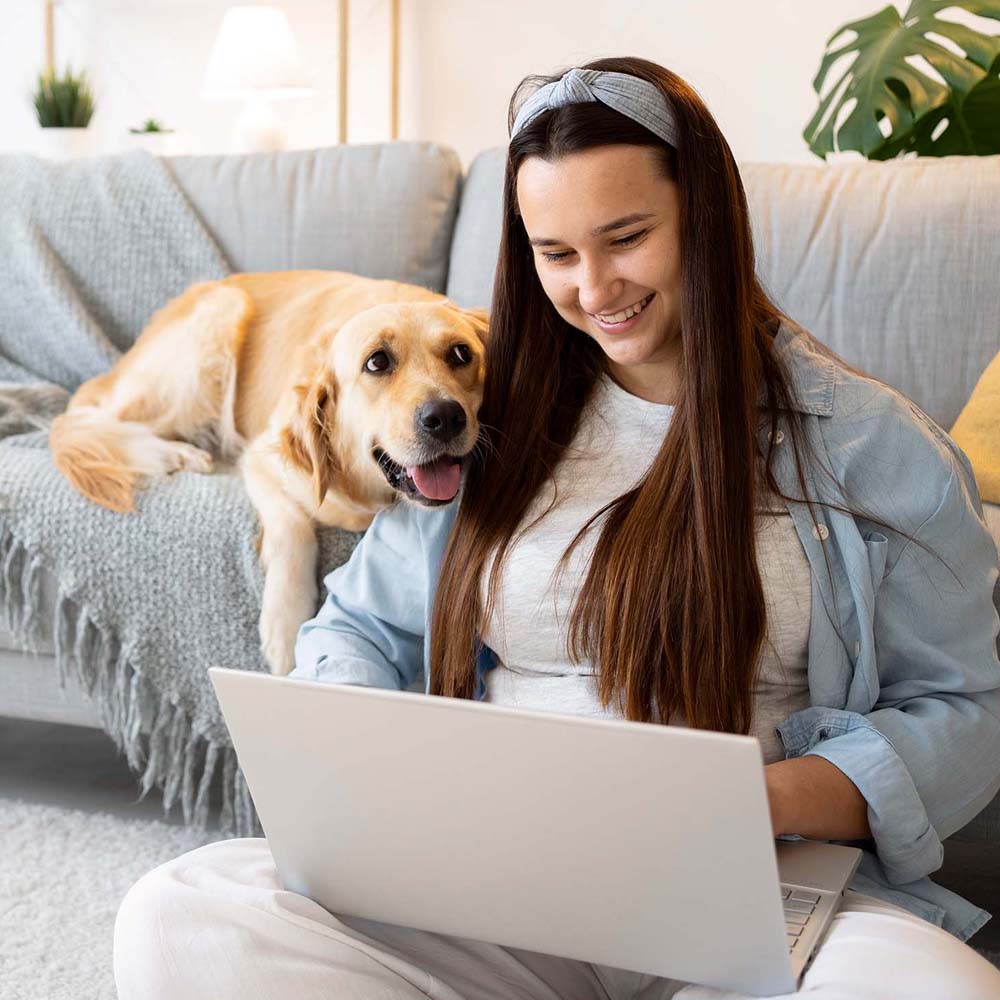
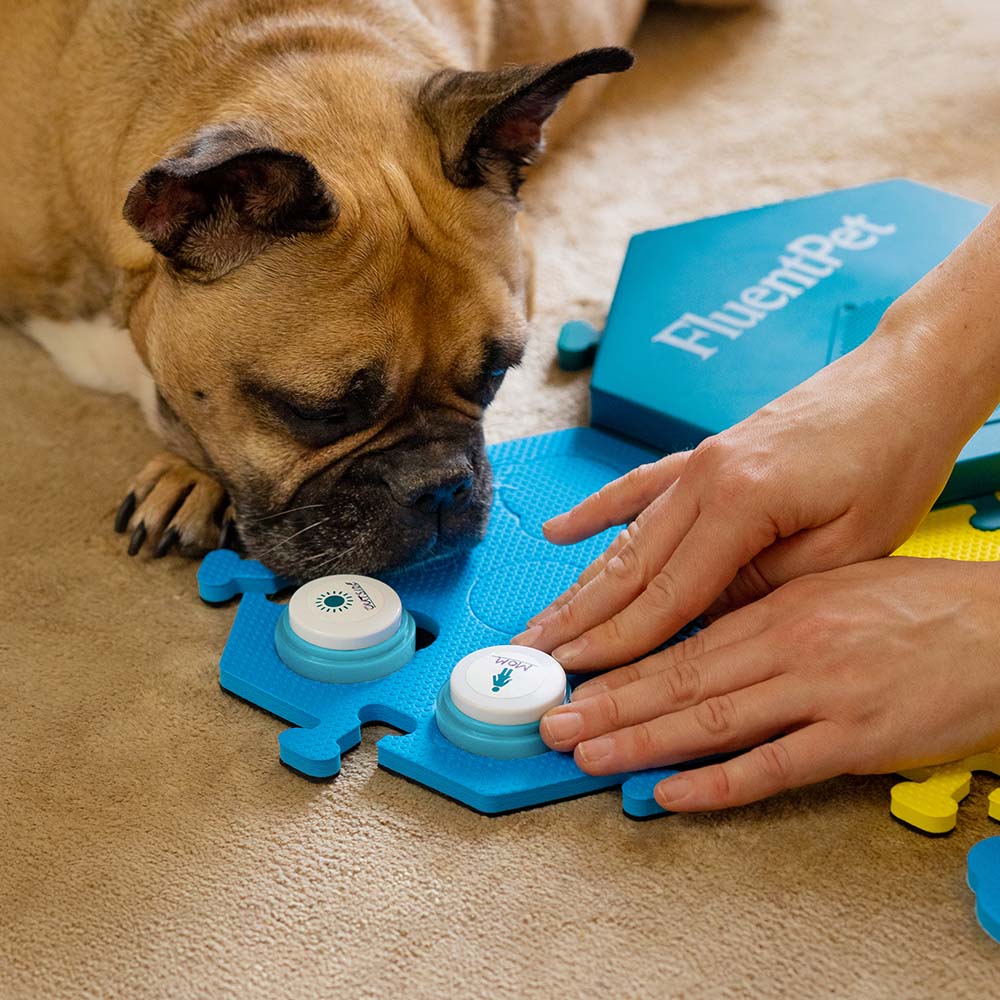
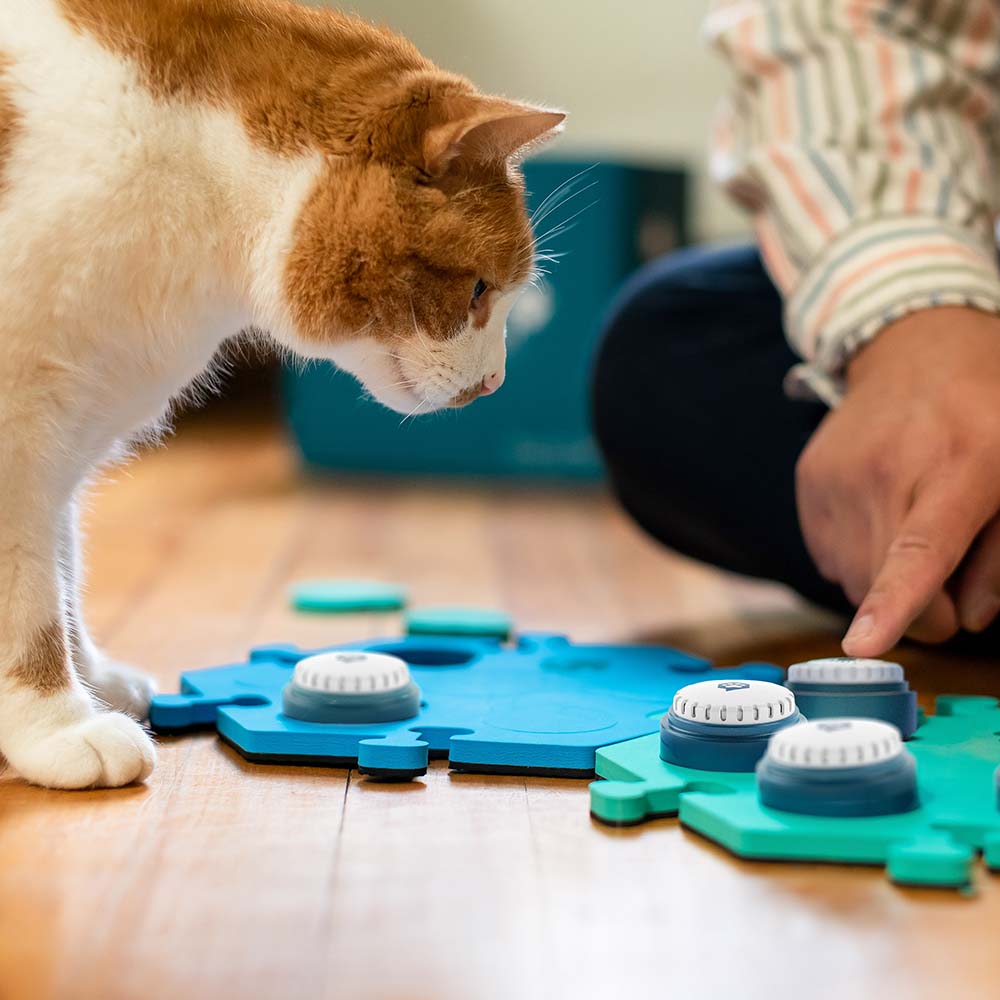
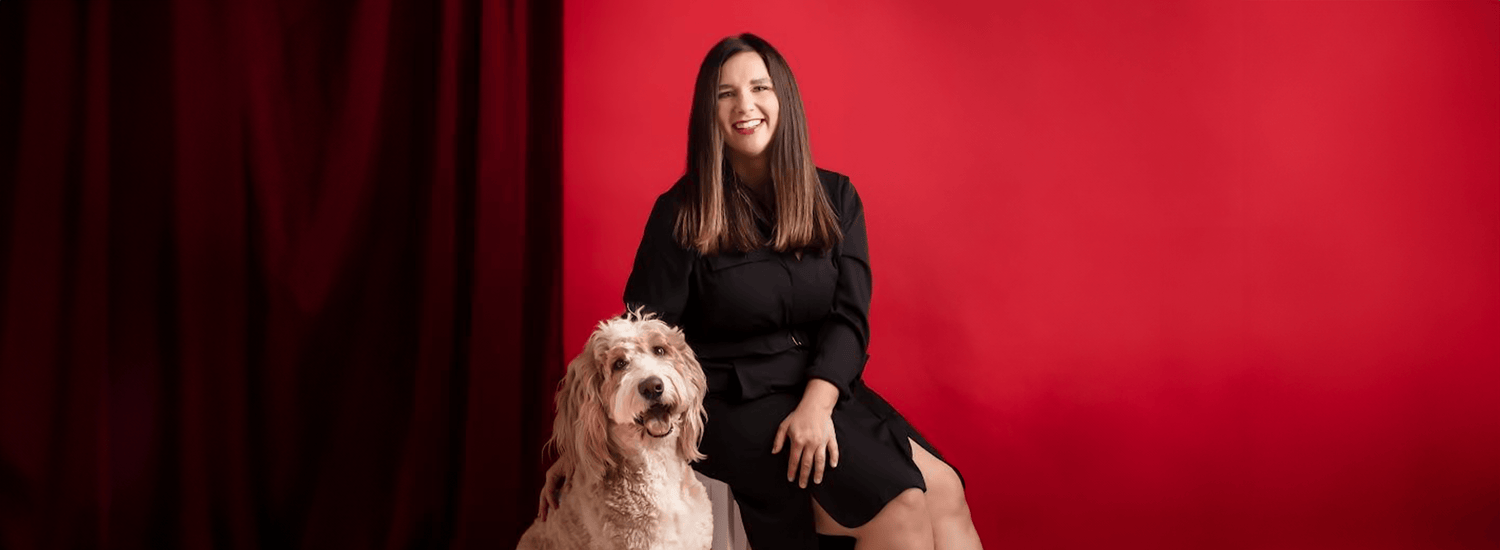
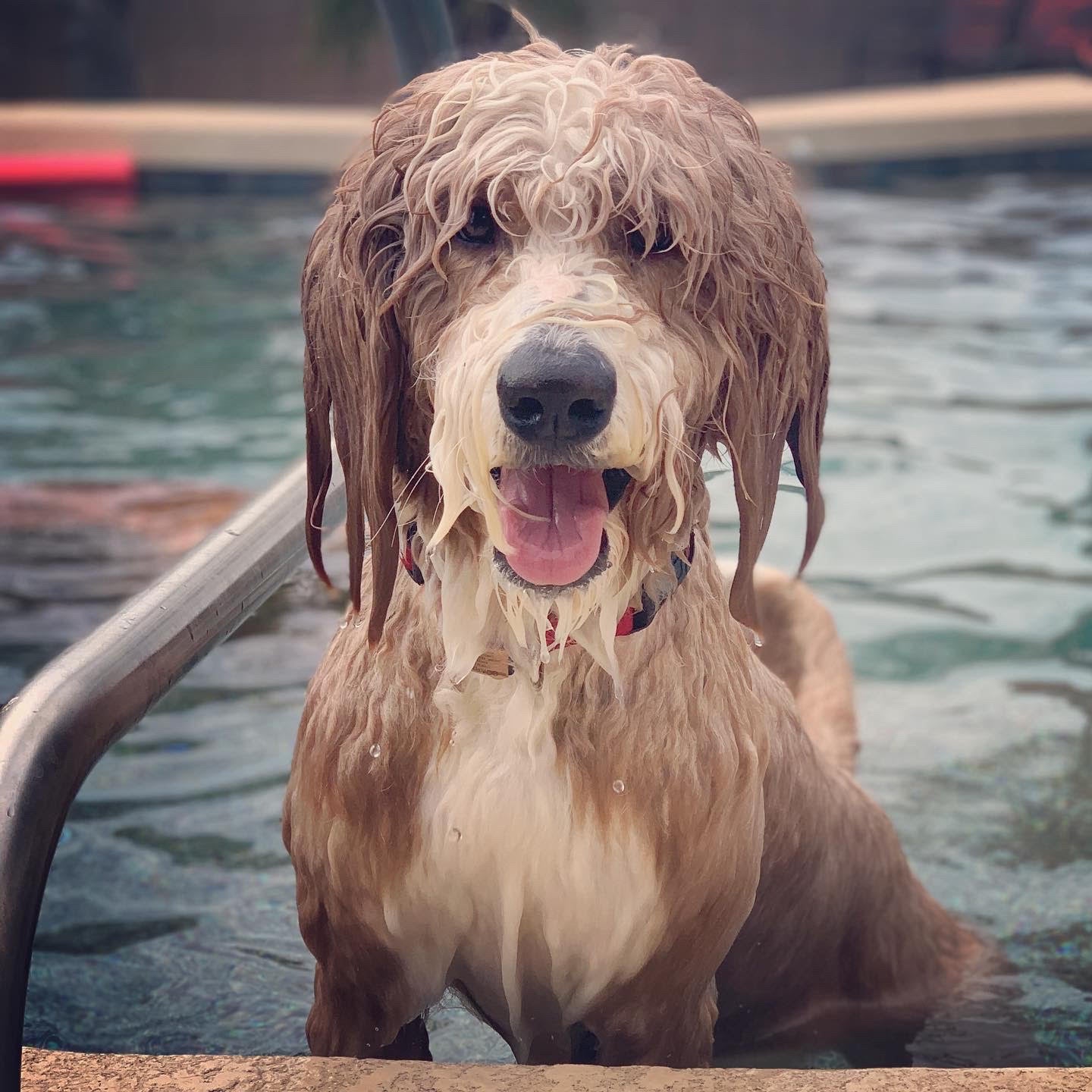
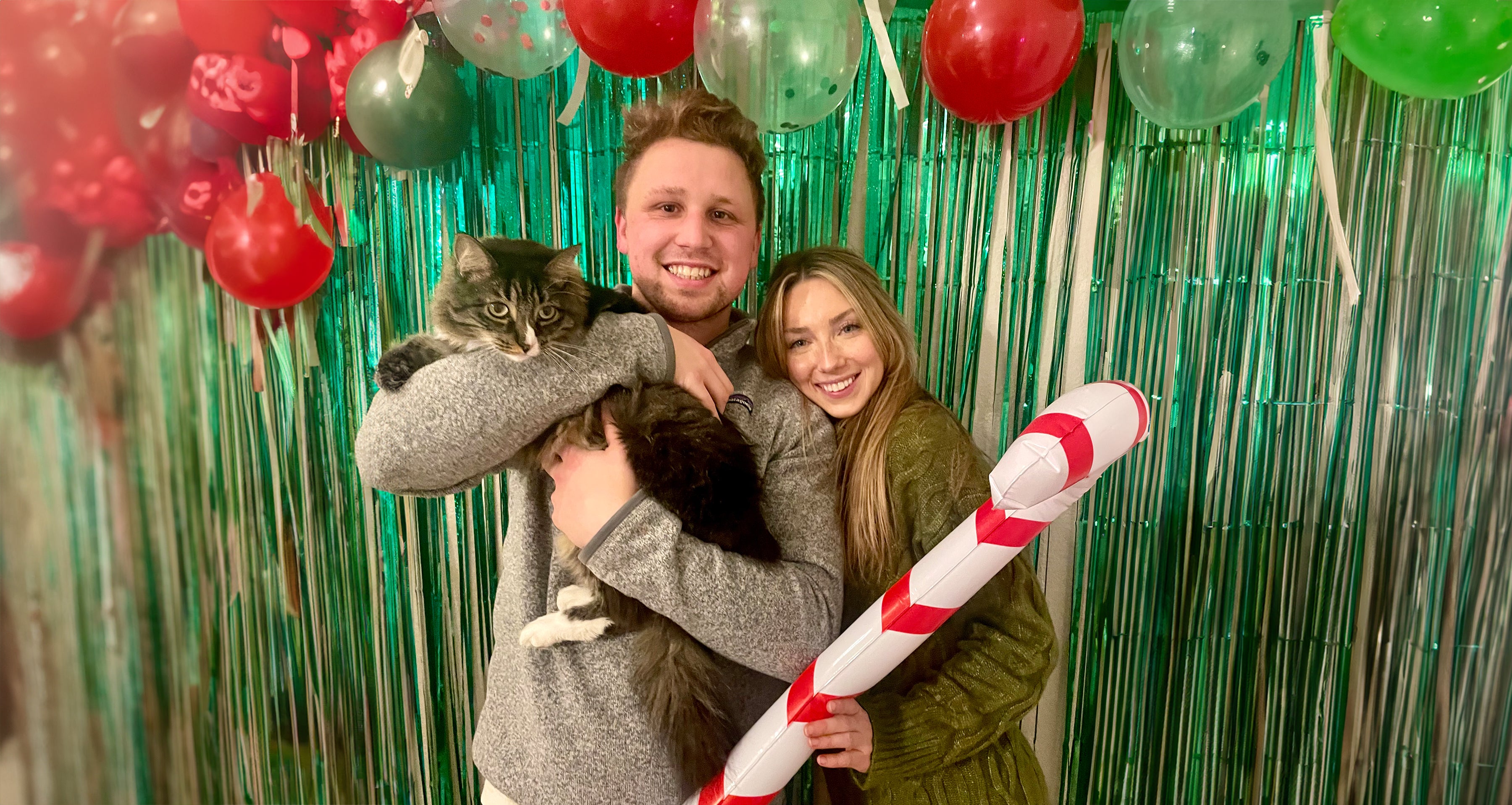
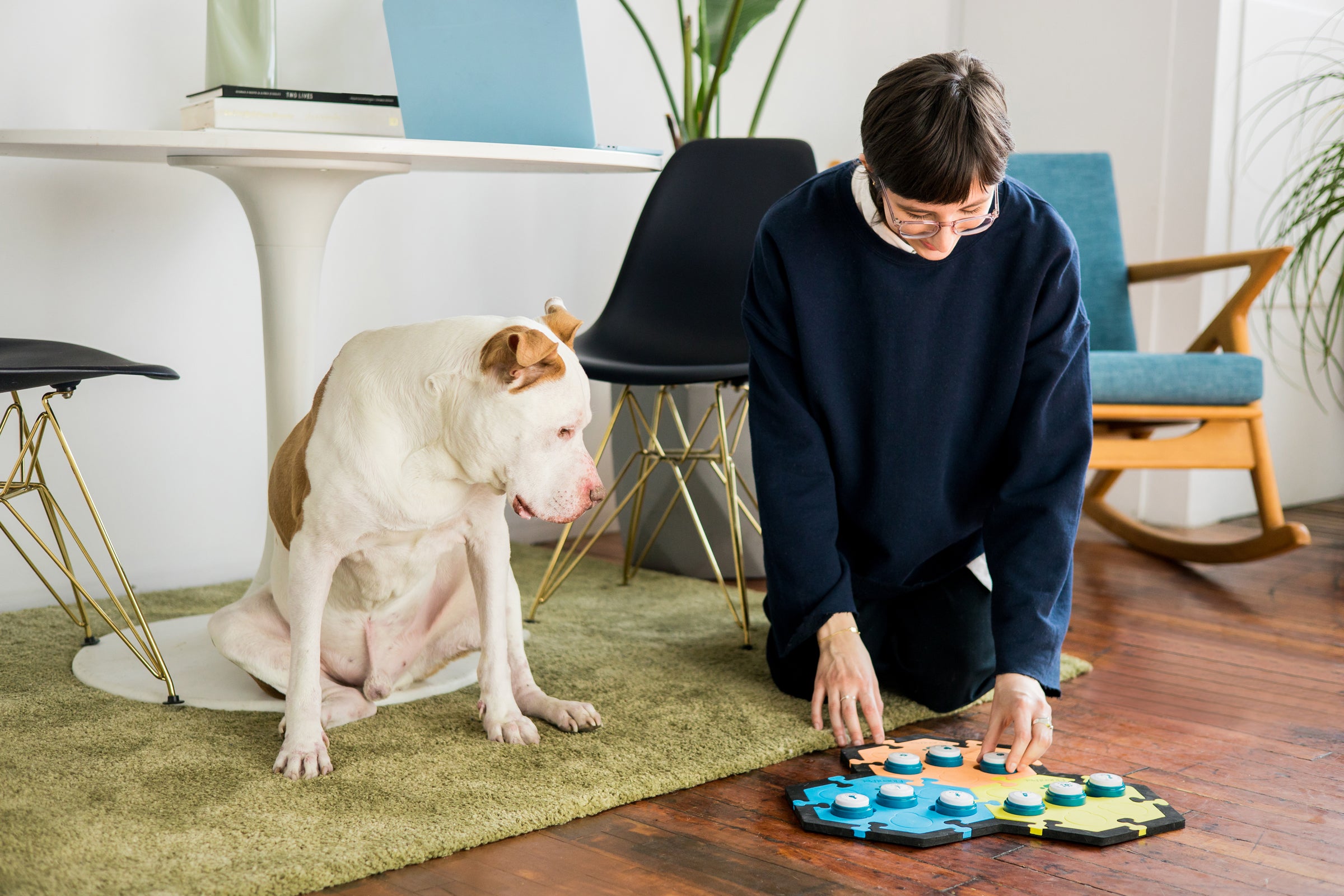
Dejar un comentario
Este sitio está protegido por hCaptcha y se aplican la Política de privacidad de hCaptcha y los Términos del servicio.